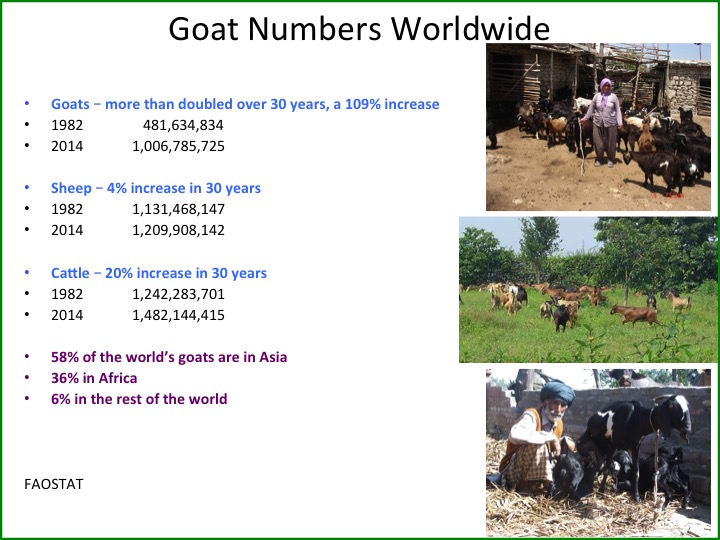Do You Know the Worldwide Trend of Goat Numbers?
go.ncsu.edu/readext?445902
en Español / em Português
El inglés es el idioma de control de esta página. En la medida en que haya algún conflicto entre la traducción al inglés y la traducción, el inglés prevalece.
Al hacer clic en el enlace de traducción se activa un servicio de traducción gratuito para convertir la página al español. Al igual que con cualquier traducción por Internet, la conversión no es sensible al contexto y puede que no traduzca el texto en su significado original. NC State Extension no garantiza la exactitud del texto traducido. Por favor, tenga en cuenta que algunas aplicaciones y/o servicios pueden no funcionar como se espera cuando se traducen.
Português
Inglês é o idioma de controle desta página. Na medida que haja algum conflito entre o texto original em Inglês e a tradução, o Inglês prevalece.
Ao clicar no link de tradução, um serviço gratuito de tradução será ativado para converter a página para o Português. Como em qualquer tradução pela internet, a conversão não é sensivel ao contexto e pode não ocorrer a tradução para o significado orginal. O serviço de Extensão da Carolina do Norte (NC State Extension) não garante a exatidão do texto traduzido. Por favor, observe que algumas funções ou serviços podem não funcionar como esperado após a tradução.
English
English is the controlling language of this page. To the extent there is any conflict between the English text and the translation, English controls.
Clicking on the translation link activates a free translation service to convert the page to Spanish. As with any Internet translation, the conversion is not context-sensitive and may not translate the text to its original meaning. NC State Extension does not guarantee the accuracy of the translated text. Please note that some applications and/or services may not function as expected when translated.
Collapse ▲Although referred as The Poor Man’s Cow, the worldwide number of goats has more than doubled (+109%) during the last 30 years, attesting to the importance of that livestock species to the livelihood of million of families. Conversely, during that same period the number of sheep and cattle only increased by 20 and 4%, respectively.
Thus, due to the increased importance of goats worldwide, the International Fund for Agricultural Development (IFAD), a specialized agency of the United Nations dedicated to eradicating rural poverty in developing countries, recently requested the International Goat Association (IGA) to undertake a study to sensitize policy- and decision-makers about the impact of small ruminants in development, using rigorous case studies and economic analysis. The study titled “Scaling-up Successful Practices on Sustainable Pro-Poor Small Ruminant Development‘ is available for free download in pdf format on the IGA website.



